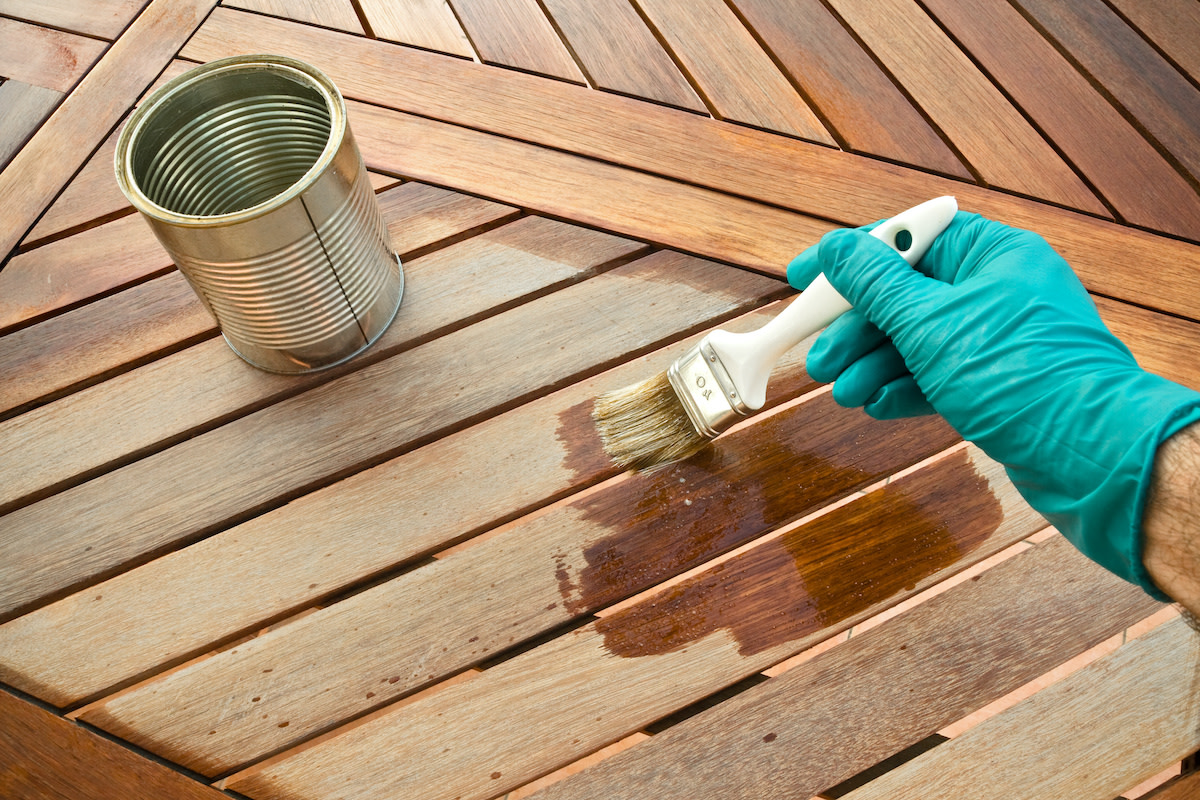How to Refinish a Table: 4 Steps to Refinishing Wood Furniture
Written by MasterClass
Last updated: Jan 26, 2022 • 4 min read
Learn how to refinish a table and restore old wood furniture items to their original appearances.
Learn From the Best
What Is Refinishing?
Refinishing is a multi-step process you can perform to maintain, restore, and protect a piece of furniture. The first step of a wood furniture makeover is to remove old finish, varnish, or wood stain until you reach the original wood surface. Next, you can sand, plane, or mend any damage to restore a piece of furniture to its original appearance and function. Finally, you reapply a protective finish like a top coat of a polyurethane sealer or a coat of paint to the wood’s surface.
3 Reasons to Refinish a Table
Here are a few reasons to add furniture restoration to your home improvement skill set:
- 1. To extend the life of important pieces of furniture: If you own a table that’s a family heirloom or sentimental piece, you must take steps to maintain its function and appearance. Maintenance is especially important if the furniture is a high-use item, such as a dining room table, kitchen table, side table, coffee table, or living room end table.
- 2. To save on interior décor costs: A full dining room furniture set can be pricy. On the other hand, cleaning up your existing dining table and chairs or applying a different stain color renews the aesthetic of your dining space for a fraction of the cost.
- 3. To start a side hustle selling flipped furniture: Fixing up furniture from yard sales or online marketplaces is one way to earn extra income from DIY projects. If you are detail-oriented and have an eye for design and trends, you can restore or update furniture for significant profits. You will also have a positive impact on the environment when you recycle and reuse discarded furniture that would otherwise end up in a landfill.
5 Supplies for Refinishing a Table
Gather these essential tools and supplies to prepare for your refinishing project:
- 1. Foam brush: Use a paintbrush or foam brush to apply a coat of stain or paint to a wood surface. Applying a wood conditioner or a priming solution first will help prepare your freshly sanded wood to hold these finishes evenly. A foam brush is the best tool for applying matte paint.
- 2. Orbital sander: Use this tool with heavy-grit paper to smooth out any dents or scratches. Once the surface is relatively smooth, you can use finer, 220-grit sandpapers to create butter-smooth surfaces ready for priming and finishing.
- 3. Paint stripper: Wear rubber gloves and eye protection when you use a chemical stripper to remove paint or finish. Solvents are convenient tools to expedite the stripping process but can be harmful to your skin and eyes.
- 4. Putty knife: You can use any flat-edged tool or scraper to peel off layers of paint or sealant. Use a putty knife to smooth out wood glue or filler into cracks and scratches, and steel wool to clean tight corners or rounded edges on your furniture.
- 5. Tack cloth: Use a clean rag, heavy-duty paper towels, or a tack cloth to apply chemical strippers, primers, and stains to your wood furniture. You can also use these industrial cloths to complete small touch-ups or clean up any drips or messes.
How to Refinish a Table
Follow this simple step-by-step tutorial to refinish wood furniture:
- 1. Clean any dust or debris. Use a wet sponge or micro cloth to clean the table surface thoroughly. Ensure the table is dry before continuing with the next steps of the finishing process. Cleaning will also reveal any stains you might need to sand or scrub with steel wool.
- 2. Sand the table. To remove the finish or fix imperfections, use an orbital sander. This will remove scratches, gouges, and chipped edges. Operate the sander in a slow and steady pattern to avoid over-sanding specific areas. Uneven sanding will create high and low points on the table surface—peaks and valleys that will not hold paint or stain uniformly, resulting in an uneven appearance. Clean the table of any dust or debris before you begin priming the surface.
- 3. Apply primer or wood conditioner. Prepare the table’s surface to receive paint or a finish. A priming solution or wood conditioner will distribute your chosen paint or stain evenly across the wood surface. Allow the solution to soak into the wood grain for ten to fifteen minutes before using a clean rag or cloth to remove any excess solution.
- 4. Stain or paint the table. Use a paintbrush or foam brush to apply stain, paint, or sealant to your table’s surface to protect it and totally refresh its appearance. Use slow and even strokes when staining wood to give the table a consistent finish. After four to six hours, your first coat should be dry. Inspect the piece in natural lighting to decide if you want to apply a second coat. Once you appreciate the wood tone of your new table, you can finish your project with a sealer or wax to protect the top of the table from stains, chipping, and exposure to sunlight.
Ready to Give Your Space a Chic Update?
Master everything from color theory to pattern mixing with the MasterClass Annual Membership and exclusive lessons from award-winning interior designers like Corey Damen Jenkins and Kelly Wearstler. From shopping for statement furniture to designing a lighting scheme to choosing the newest member of your plant family, the skills you’ll pick up are sure to make your house, apartment, or condo feel even more like a home.
